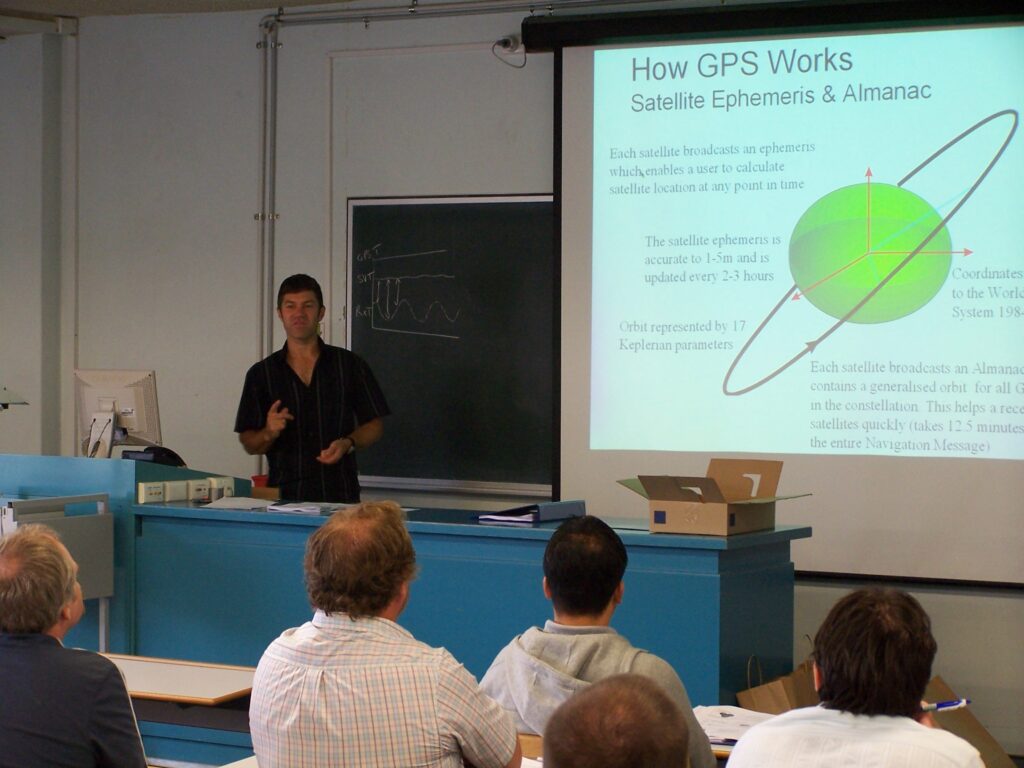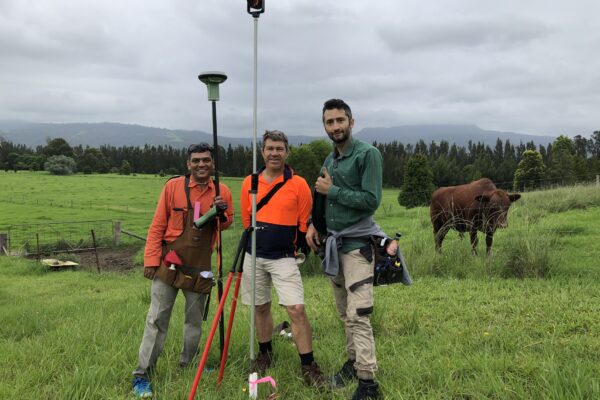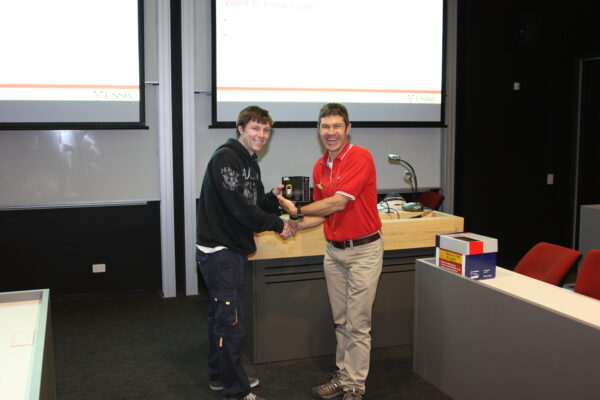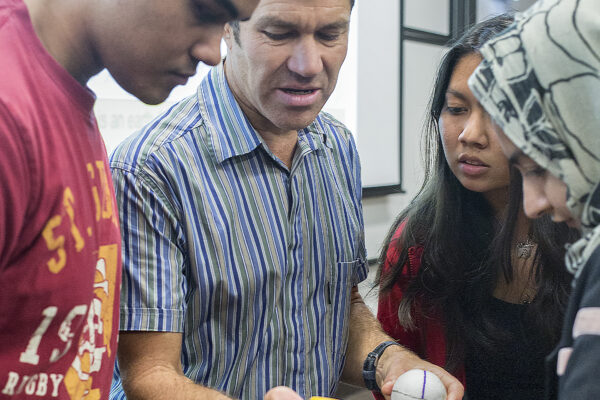Craig Roberts
Senior Lecturer in Surveying
Current role
Senior Lecturer in Surveying/Geodesy at the University of New South Wales
Additional positions
Deputy Director of External Relations Committee, School of CVEN
Current role
Senior Lecturer in Surveying/Geodesy at the University of New South Wales
Additional positions
Deputy Director of External Relations Committee, School of CVEN

School Representative to the NSW Survey and Mapping Industry Council (SMIC)
Academic Education Representative for Intergovernmental Committee on Surveying and Mapping Permanent Committee on Geodesy
University Representative for the NSW Datum Modernisation Working Group
Former Education Representative of the NSW Board of Surveying and Spatial Information (BOSSI)
Former Chair of the Definition of a Land Survey committee (under BOSSI)
Deputy Director of External Relations Committee, School of CVEN
Past roles
Lecturer in Surveying/GPS/Geodesy at RMIT University, Melbourne, Australia (2002 to 2003)
PhD Studies at UNSW (1996 to 2001)
Scientific Assistant at GeoForschungsZentrum, Germany (1995 to 1996)
Geodetic Engineer at University Navstar Consortium (UNAVCO), USA (1992 to 1993)
Graduate Surveyor at David Phillips P/L and Allan D. Wilson & Assocs P/L (1989 to 1992)
Awards
Best Paper Award for 2015 by the Editorial Board of the Journal of Spatial Science
2015 SSSI National Education Development Award
2014 SSSI NSW Education Development Award
Best Oral Presentation, SSC2009, Adelaide, Australia, Oct 2009
Best Academic Paper, SatNav 2003, Melbourne, Australia, July 2003
Listening to Craig Roberts talk about the promise a surveying study path offers young people today, his enthusiasm is palpable.
“Young people with bright ideas and some programming skills could really make an impact,” he says. “If you are looking for a satisfying, well paid and secure career that combines outdoors, geometry, maps and gadgets, then consider surveying.”
It’s no wonder Craig is so passionate. As the University of New South Wales’ senior lecturer in surveying, GPS and geodesy, Craig gets to teach the surveying profession’s leaders of tomorrow. Of course, his passion for the profession underlies everything he does today – and that was a passion that began back before he himself started at university.
It was an attentive relative that first flagged surveying as a potential career path to Craig.
“My grandmother showed me a cut-out from the newspaper saying Australia needed surveyors,” Craig recalled. “They told me it was an outdoor job and best if you liked geometry and physics. Suited me perfectly. I was in scouts and was interested in rock climbing and bushwalking – still am!”
From there, Craig dropped into the South Australian Institute of Technology open day (now the University of South Australia) and shortly thereafter enrolled in a surveying course. Craig’s life of surveying was well underway. His first few years outside of university would prove stimulating and varied.
“I completed a surveying degree and then worked as a private surveyor for two and a half years,” Craig explains.
“Then I had the opportunity to work overseas for some research organisations measuring plate tectonics using GPS. It was the first time any of us were able measure centimetre accuracy over thousands of kilometres of distance, as no such technology had previously existed. My job was to use my surveying skills to enable all the research work that some of the world’s leading scientists and geophysicists were undertaking in places like Nepal, Ethiopia, Argentina and Indonesia.
“What a job!”
When Craig returned to Australia, he brought with him a wealth of experiences that would go on to enrich his teaching practices. As he puts it: “I wanted to share my experiences with students and encourage them to use their valuable surveying knowledge for their exciting adventures.”

After teaching at RMIT University for two years, Craig began teaching at the University of New South Wales in 2004, stepping into the senior lecturer role in 2007.
Since then he has worked to ensure that the university surveying courses he oversees expose students to the latest in cutting edge techniques and research.
On top of teaching courses to all years of the UNSW undergraduate degree program, Craig develops the curriculum design. But there is more to his role than just the university day-to-day.
“I go to lots of conferences and speak with lots of surveyors,” Craig offers. “We try to adapt our programs to keep our teaching relevant, but also try to introduce new cutting-edge techniques so that we can educate the profession as well. My graduates are often ahead of their bosses in some high-tech areas, but lack real-world experience.”
For one thing, there is a healthy emphasis on practical work.
“I try to incorporate lots of field work into the teaching, because students love it and that is where they do much of their learning,” says Craig. “Only after you have tried and failed and tried again in the field, do the lectures and assignments start to make sense.”
The practical side of things comes to a head in the third year of the UNSW undergraduate course. “We run a survey camp for one week, and the students learn a lot. It is regularly voted as the most significant course in our program.
“We also offer final year capstone projects; no exams, no lectures, just a project that the students have to complete by themselves with only guidance from the lecturers. We often include people from industry and the latest technology. We want our graduates to be exposed to as much technology as possible before graduating. They won’t be experts, but they will get a sense of the capabilities of the many new devices available.”
Craig himself entered surveying with a love of the outdoors, geometry and physics. What does he suggest for new students? Truthfully, things haven’t changed all that much!
“Fundamentally, students who love the outdoors but are looking for a professional career, who love maths – especially geometry – and who love maps and mucking around with gadgets will love a career in surveying and geospatial engineering.”
When it comes to academic specifics, Craig highlights Maths Ext 1 and Physics as pre-requisite subjects to take at HSC. While students completing Advanced Maths can take bridging courses at UNSW, it is taught in a compressed mode which is not as good as just taking the correct courses at HSC.

Craig is quick to mention a program that UNSW offers that can give year 12 students a second chance to access a surveying course.
“For guaranteed entry, students require an ATAR of 91 but we accept applications down to 81 as long as students undertake the Faculty of Engineering Admissions Scheme (FEAS), which is really just a way for us to get to know you better and assess your aptitude for a career in surveying and geospatial engineering.
“We recognise that ATAR is a blunt instrument and want to give applicants a chance to join in studying surveying at UNSW. We offer other pathways too. Please talk to us.”
To find out a little more about UNSW’s program, watch the video below.
For Craig, working with students on the journey from high school leavers to young professionals is a richly rewarding experience.
“Even better is when I see them as young professionals at conferences confidently presenting their work and really making a contribution to their profession and the wider community,” he confides.
That is not all though. He singled out, “being paid to keep up with this fast moving, high tech profession and then being called upon by said profession to help educate them on some of the latest advances.
“I’m not only an educator to students but also to practising surveyors – and they teach me too.”
Across his years as a surveying lecturer and teacher, Craig has accrued many happy experiences and memorable stories.
“I remember the bright young mum who came to our school from Civil Engineering at Wollongong uni,” Craig remarks. “As her eyes tracked me around the room in lectures, it was clear to both of us who was smarter… I just hoped the rest of the class did not notice.
“She managed to juggle family life and full time study, earn the University medal (averaging 85 or more for all courses combined), become the President of the Surveying student society and now she is the Surveyor General of NSW – the first female Surveyor General in Australia!”
Craig is of course taking about Narelle Underwood. You can read more about her on this very website.
With the new generation of surveyors stepping out of the classroom and into the field, the question becomes, “what does the future hold?”
Craig suggests that tomorrow’s surveyors should be mindful of devices such as laser scanners, drones, GNSS and surveying robots becoming easier to use, which will put more of an emphasis on the management of the geospatial data rather than its capture.
He predicts that virtual reality and augmented reality will become new growth areas. “But there is no point having pretty pictures that don’t line up or can’t be relied upon,” Craig warns.
“Surveyors and geospatial engineers are fast becoming the geospatial digital custodians of many and varied projects. They are the only professionals with the requisite education to combine data from these myriad data sources and lock digital models onto the real world.
“It’s an exciting new digital – and real – world.”

To read more about studying surveying in New South Wales, visit our NSW web page here – and find a portal with information on other states’ course options here.